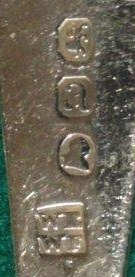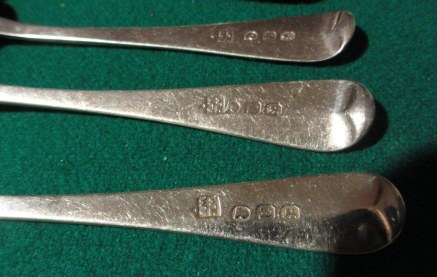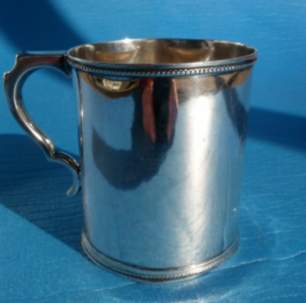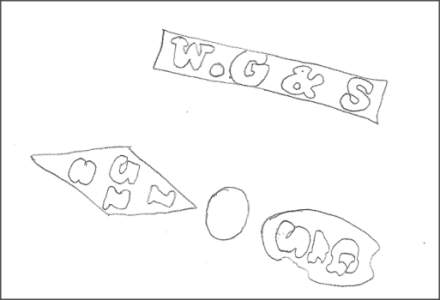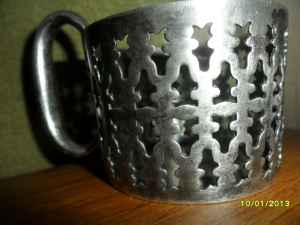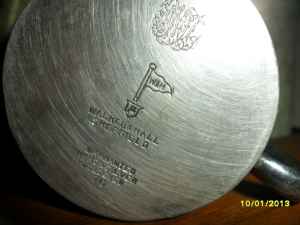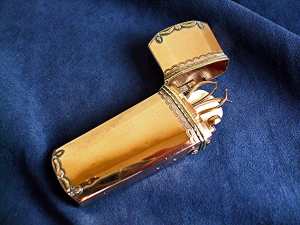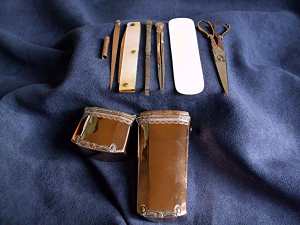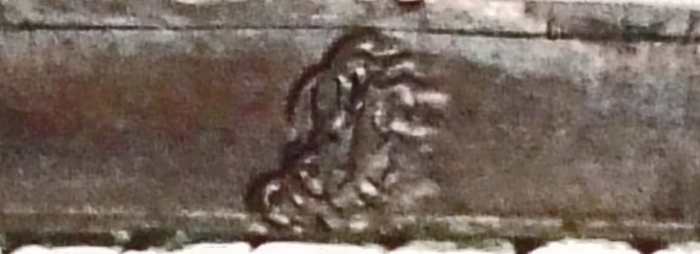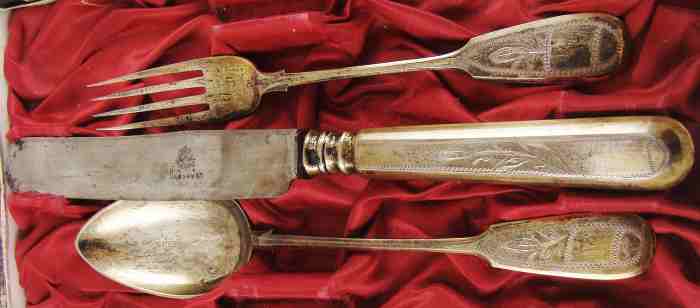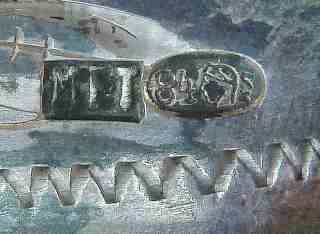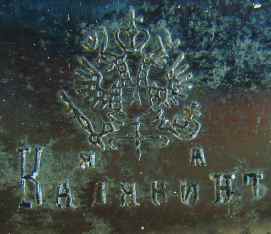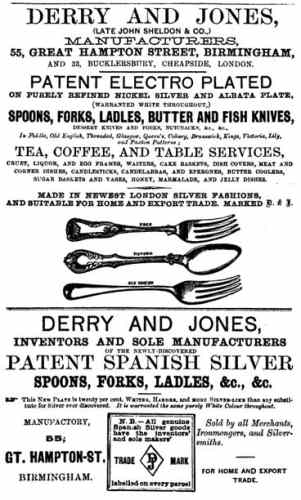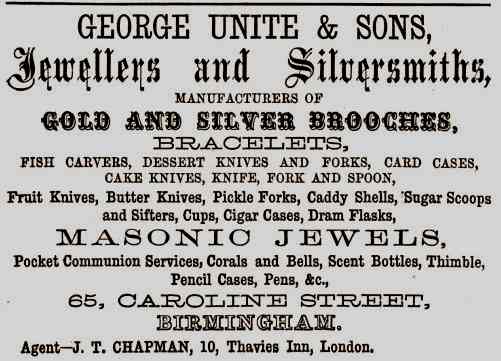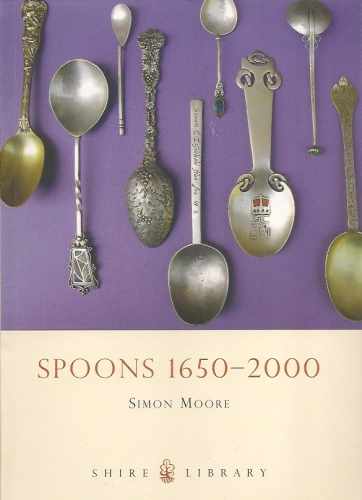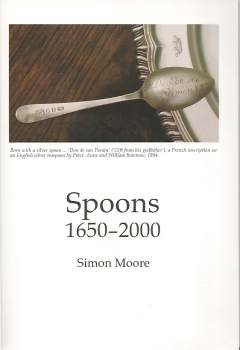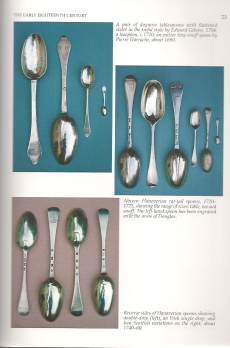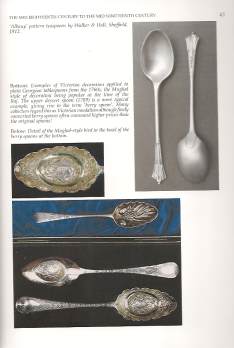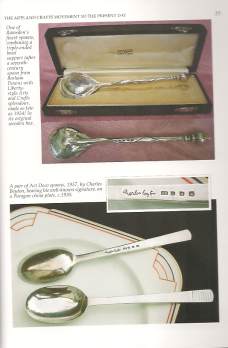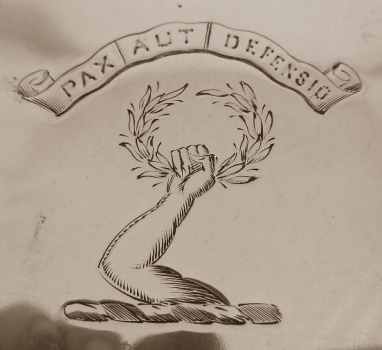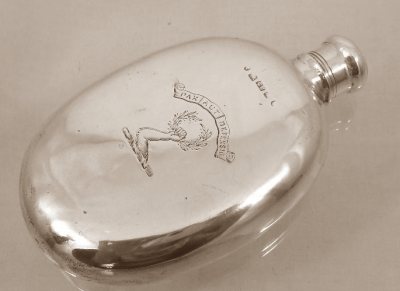 newsletter # 106 March 2013
newsletter # 106 March 2013www.ASCASonline.org SITE MAP
email: silverassociation@yahoo.it
YOUR GUIDE TO MARCH NEWSLETTER:
articles
new
members
members' window
|
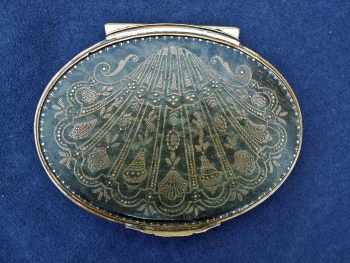
Bill Poynton presents:
|
New members
Welcome to new ASCAS members:
Amberly Charter - USA
Gregorio Circo - Italy
Francois Costes - USA
Shirley Curry - USA
Jiri Kolar - Czech Republic
Deborah Lowry - USA
Kathy Linskey - Australia
George Morris - USA
Christine Wilson - Australia
Philip Windsor - England UK
|
top page -
page map |
Mail to ASCAS: e-mail silverassociation@yahoo.it
Pietro Rampazzo writes:
... I need information about the maker of this tea spoons set.
Thanks for your help
Pietro Rampazzo
The date is London 1816 and the hallmark belongs to
William Eley I and William Fearn. The first mark of this
partnership was registered in 1797, but I believe that your mark
is that registered as spoonmaker on October 6, 1814 when the
triple partnership with William Chawner was closed. The three
"William" (Eley, Fearn and Chawner) worked together from 1808 to
1814.
Giorgio Busetto
Javier Galán writes:
... I need to know who made the cup of the image attached in
this email and the type of silver it is made.
I also include a drawing of the bottom of the cup.
I was searching for hours into your website, but I didn't come
out with the answers.
Please, help me! Thank you in advance
Javier Galán
The maker is Wm. Gale & Son, New York. The "52" (or "51")
refers to the date 1852. The metal is presumably coin silver
(but the firm advertised also as manufacturer of "Rich Plated
Wares").
Giorgio Busetto
Ulyana Pustoshnay writes:
...I'd wish to have some information about this item (a tea
glass holder?) I inherited from my father. It is marked Walker &
Hall and I'd wish to know when it was made.
I would greatly appreciate any input from you or other members.
Thank you in advance for your help.
Best regards
Ulyana Pustoshnay
Your item looks as a tea glass holder made by Walker &
Hall (an item not frequent in UK silver plate) It was made,
presumably, at the end of the 19th/beginning of the 20th century.
Unfortunately I'm unable to date it as, to my knowledge, the key
to decipher the "date letter" (present in the shield under the
pennant) is still unknown.
Giorgio Busetto
Bill Poynton writes:
...I’ve purchased this Gold Etui without knowing too much about
it, except that it, with its complete set of tools, is in
perfect condition.
As far as I can make out it is Austrian or Austro-Hungarian,
dating from 1788, although I'm uncertain about the Town or
Maker's marks.
Any help members can offer would be highly appreciated.
Bill Poynton
Martine Plouvier writes:
Dictionnaire des orfèvres de la juridiction d'Amiens
Depuis dix ans je travaille à la rédaction et fabrication
d'un dictionnaire des orfèvres de la juridiction d'Amiens
(France, Somme) qui comprend une quinzaine de villes: Amiens,
Abbeville, Péronne, Montdidier, Calais, Montreuil, Boulogne,
Noyon et Saint-Quentin pour les principales.
Je compte terminer mon travail cette année: si certains de vos
membres étaient intéressés par mon étude en me montrant des
poinçons et des pièces non répertoriées, je pourrai les aider à
les identifier et ils participeraient du même coup à la
progression de mon ouvrage.
J'ai recensé aujourd'hui 1500 orfèvres et à peu près 400 pièces.
Vous remerciant les uns et les autres, et dans l'espoir d'avoir
un retour, avec mes salutations les meilleures.
Martine Plouvier
martinegisele.plouvier@gmail.com
Replies to questions
John Lawrence
receives this answer about his 'Russian' flatware set
(see February 2013 Newsletter)
Dr. David N. Nikogosyan writes:... These cutlery pieces on the photos are look as silver plate and
THEY ARE silver plated.
The mark MET is a Polish mark, established in 1920 for the
production made on Warsaw factories from non-precious metals
covered by thin layer of silver (or gold).
Therefore, the presence of "kokoshnik" is a forgery stamp
applied to make the product looks like silver.
The steel on the knife could be made earlier in Tsar time (before
1914) and used after 1920, when there was a lack of such kind of
materials in Poland.
David Nikogosyan
"A PAGE per MONTH"
In this column we presents a page obtained from makers'
brochures, books, auction catalogs, advertising or whatever
other printed paper, related to silver, that may be of interest
for ASCAS members.
The images will be published at a "low resolution" level and for
private and personal use only
"A WORD per MONTH"
In this column we
present an abstract from a page of the "What is? Silver
Dictionary"
courtesy of


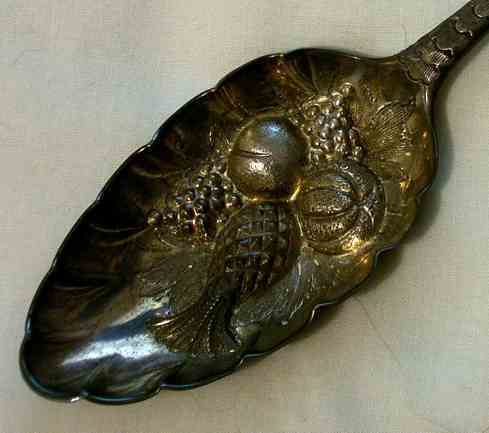
|
BERRY SPOONBerry spoon is a type of spoon having on the bowl an
embossed decoration of berries or fruits and, sometimes,
gilded interior of the bowl.
|
"A SILVERSMITH per MONTH"
In this column
we present marks, information and history of silversmiths and
silver manufacturers.
This column is published under the kind permission of Giorgio
Busetto's website

GEORGE UNITE & JAMES HILLIARD - GEORGE UNITE - GEORGE UNITE & SONS - GEORGE UNITE SONS & LYDE LTDGeorge Unite and James
Hilliard founded the business in 1825 in Birmingham. The
partnership was closed before 1845 and the business was
continued by George Unite until 1865 c.
|
"A BOOK ON MY SHELF"
In this column we present books, new
or ancient, dealing with silver in all its aspects (history,
marks, oddities...). This isn't a "book review" but only a fair
presentation of some useful "tools" that anyone may have in the
shelf of his bookcase.
ASCAS members are invited to contribute to this column
(click to enlarge images)
In the "book on my shelf" of this month ASCAS presents:
"A CREST per MONTH"
In this column we present images and descriptions of Crests and Mottoes of British, Irish and Scottish families as engraved on silver items.

Custom Search
Closing our MARCH 2013 edition of ASCAS Newsletter I hope you have appreciated its content.
Your comments, suggestions and advice will be of great help.
My thanks to Javier Galán, Dr. David N. Nikogosyan, Martine Plouvier, Bill Poynton, Ulyana Pustoshnay, Pietro Rampazzo for their precious contributions.
Giorgio Busetto
Secretary
ASCAS is a community of people having a common
interest in antique silver.
|

